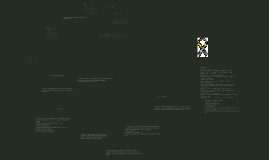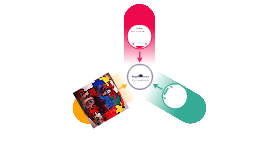Puzzle Pieces
Transcript: Puzzle Pieces Children with Autism Objective: to inform on autism spectrum Define the disorder therios of causes of autism digniosis and testing the diffrent spectrums of autism the outlook for children with autism Autism is a developmental disorder that appears in the first 3 years of life, and affects the brain's normal development of social and communication skills. (Autism, 2010) What Does this mean? by the time the child is 18 months most parents begin to notice something is wrong with the child. children with autism often have trouble in social interaction, and communicating both verbally & nonverbally. (Autism , 2010) autism occurs 3 to 4 times more likely to occur in boys then girls. according to the CDC there are 3 diffrent types of autism spectrum disorder. Autistic Disorder (also called “classic” autism). Often language delays, social and communuication "challenges" and often unusal and often repetitive behaviors such as rocking. Many also have intellectual disabilities. Asperger Syndrome usually display milder symptoms of autistic . However they often have social challenges, and often have unsusual behaviors and interests. Although generally they do not have language problems. Pervasive Developmental Disorder – Not Otherwise Specified (PDD-NOS; also called “atypical autism”) People who meet some of the criteria for autistic disorder or Asperger syndrome, but not all, may be diagnosed with PDD-NOS. People with PDD-NOS usually have fewer and milder symptoms than those with autistic disorder. The symptoms might cause only social and communication challenges. (CDC, 2011) Signs of Autism Aside from difficulties in social interactions parents will notice a variety of symptoms Not respond to their name by 12 months Not point at objects to show interest (point at an airplane flying over) by 14 months Not play "pretend" games (pretend to "feed" a doll) by 18 months Avoid eye contact and want to be alone Have trouble understanding other people's feelings or talking about their own feelings Have delayed speech and language skills Repeat words or phrases over and over (echolalia) Give unrelated answers to questions Get upset by minor changes Have obsessive interests Flap their hands, rock their body, or spin in circles Have unusual reactions to the way things sound, smell, taste, look, or feel Many children with autism have issues with sensory items. Individuals who have autism might not have sensory systems that know what input to let in and what input to filter out. Distinguish between hyperactive and hypoactive sensory systems. Individuals with hyperactive sensory systems will typically avoid activities that involve motion while ones who have hypoactive sensory systems will seek out activities that involve motion. EVERYONE has sensory issue! Imagine going through life with people constantly scraping nails on a chalkboard! Autism is also a biological disorder, associated with a number of medical conditions. Changes have been described in the brains of some children with autism that could only have occurred during the first 3 months of pregnancy. Inflammatory changes in the blood have been demonstrated at birth in children subsequently diagnosed with autism. However, nothing has been concretely discovered in this area (Taylor, 2006). Some think that postnatal agents have a hand in autism, the most popular culprit blamed is vaccines specifically MMR (Measles, Mumps, and Rubella) in which are coincidentally given around the same time that children will begin to show clear signs of autism(Taylor, 2006). This is thought to be the cause when a child has regressive autism in which they grow and develop what seems to be normally and then regress loosing speech, and social skills. Most doctors however feel that MMR s are not the cause of autism, and feel the benefits of this vaccine far outweighs any potential risk (Taylor, 2006). Diagnosis Unlike many other diseases there is no concrete test for autism Doctors instead look at a Childs behavior and diagnose the child. By 18 months most parents will begin to see signs of autism in their child By two years diagnosis is reliable, however for many children especially those with a milder case of autism diagnosis can come much later This means that those children do not get the early on assistance they need, that will help in socialization and other help they need (Autism, 2010). There are several schools of thought on how to manage autism a. Some feel that diet can play a major role in managing autism in children GFCF Diet: Many autistic children improved greatly with a casein and gluten Free diet. Casein is found in milk and gluten in wheat, oat, rye, and barley. Anti-yeast Treatment: Some experts believe that yeast infections (which may result from antibiotic treatment) make autism more severe. Syndromes include thrush (white patches in mouth). Avoid malt, vinegar, pickles, chocolate, peanuts, corn and chicken. Also avoiding foods with dyes such as colored candies.

















